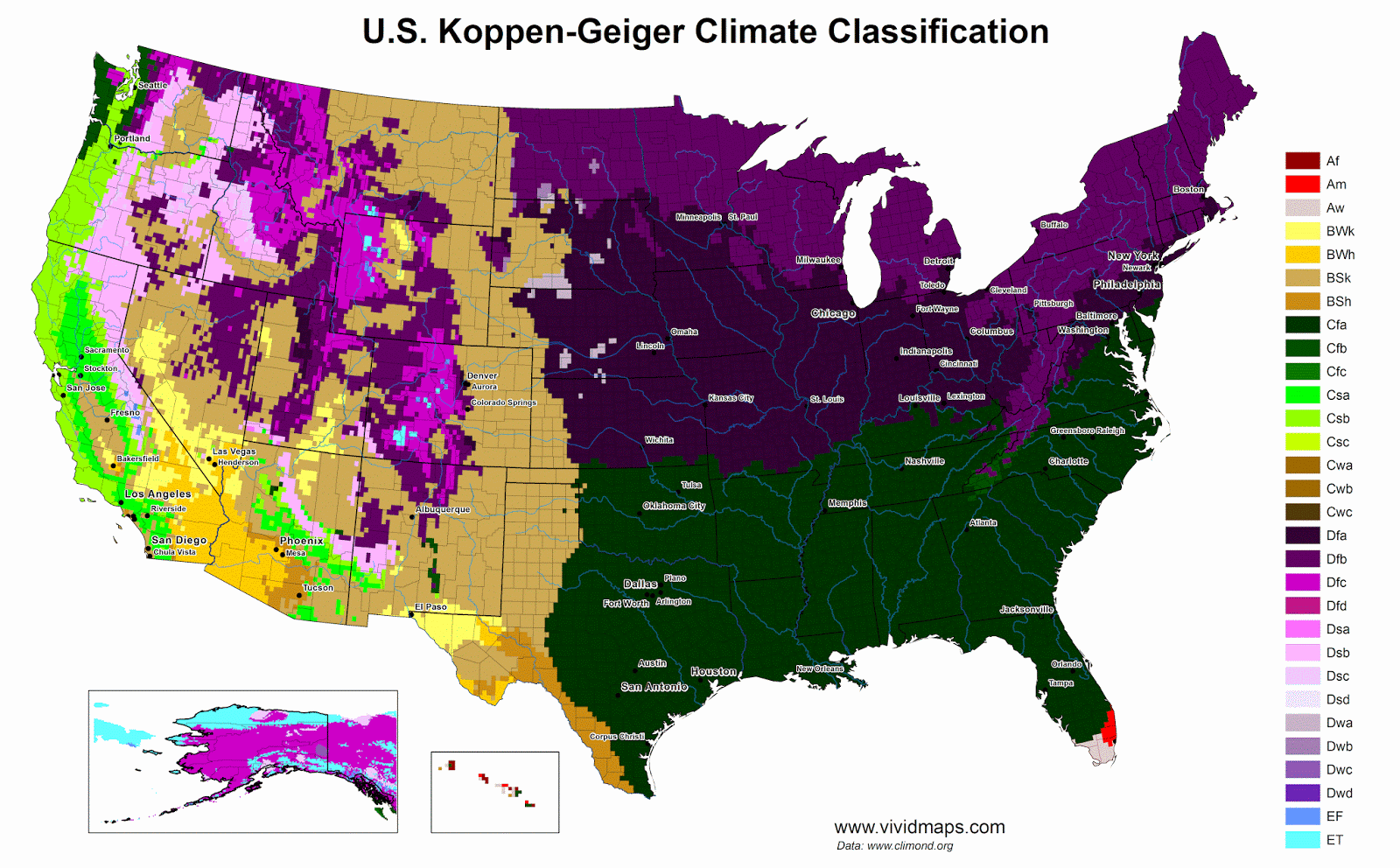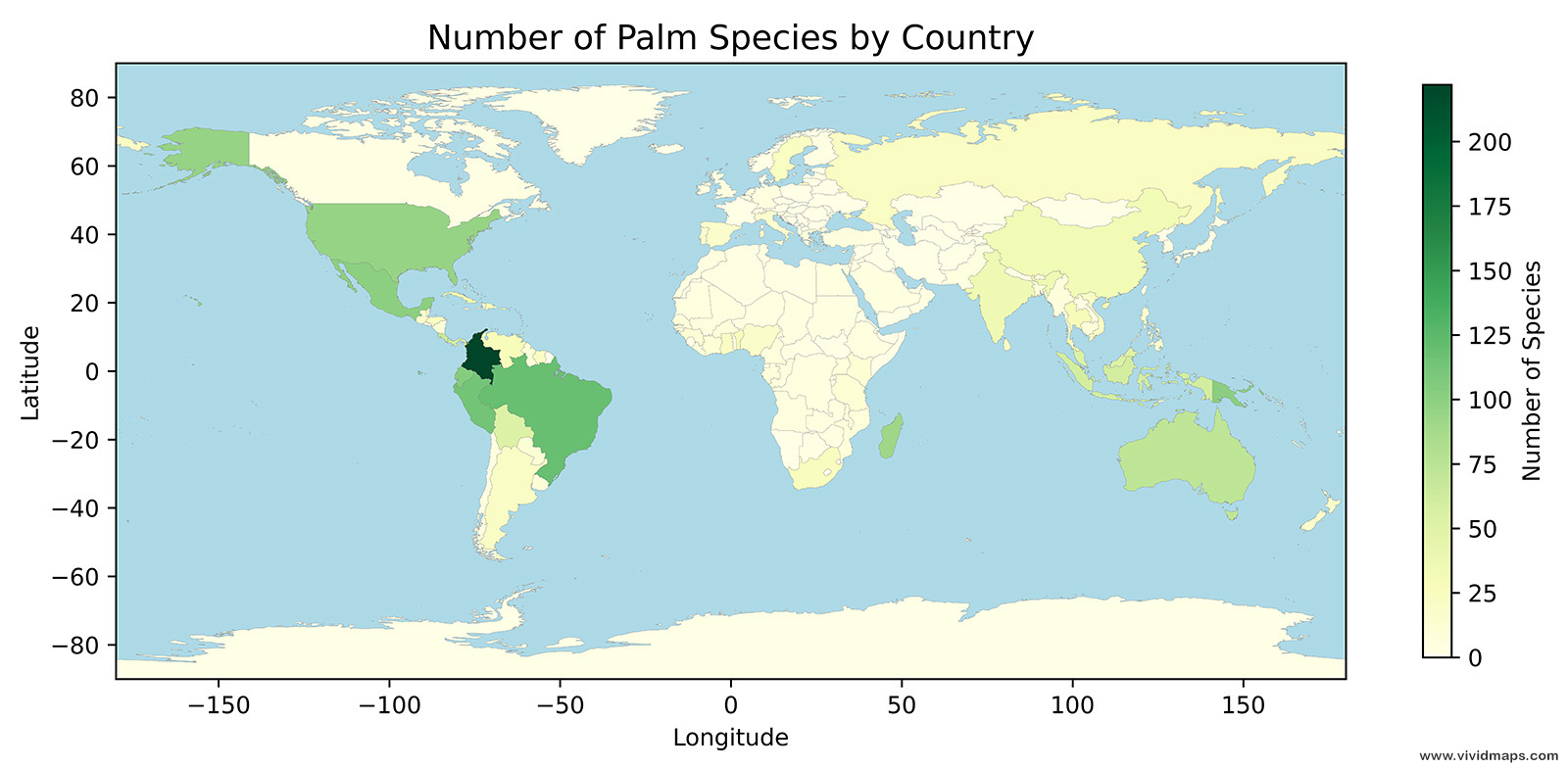The Unequal Distribution of Global Precipitation Mapped
Each year, Earth receives about one meter (39 inches) of rainfall or snowfall on average. But this “global average” hides an enormous imbalance. From the lush slopes of tropical mountains to the parched heart of deserts, the distribution of precipitation is far from even.
Latitude, prevailing winds, mountain ranges, ocean currents, and even Earth’s axial tilt all shape where the rain falls—and where it doesn’t.
Cartographer Perrin Remonté captured this striking contrast using data from Chelsea Climate, dividing the planet into two halves:
- Blue areas: more than one meter of precipitation annually (rain or snow)
- Yellow/orange/red areas: less than one meter annually
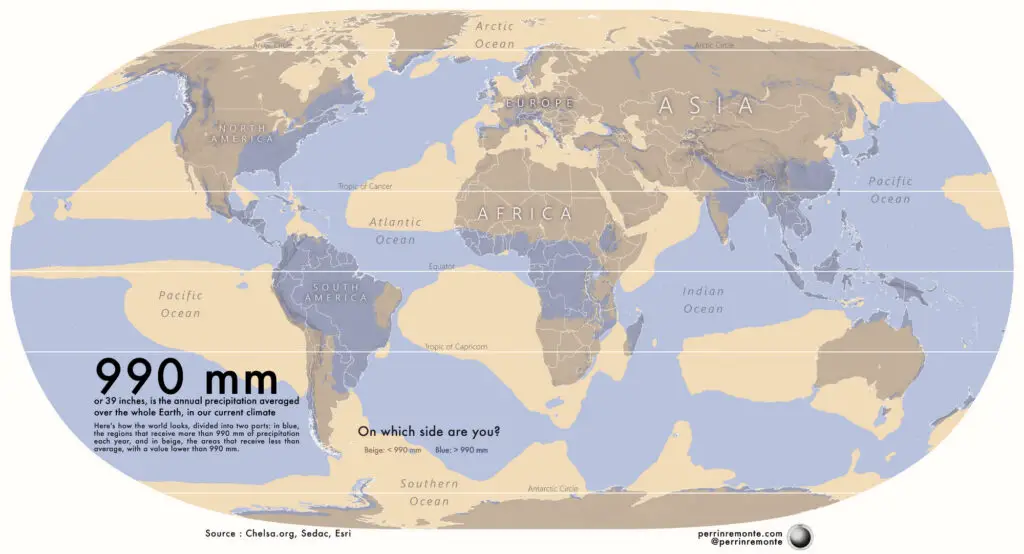
Table of Contents
What Shapes the Rainfall Map of the World?
Several interlinked factors dictate why some regions are drenched while others remain bone-dry:
- Proximity to water – Oceans, seas, and lakes are moisture reservoirs.
- Latitude – Near the equator, intense sunlight drives high evaporation and rainfall.
- Wind patterns – Global atmospheric circulation funnels moist air into convergence zones.
- Topography – Mountains force moist air upward, causing rainfall on the windward side and dryness on the leeward.
- Ocean currents – Warm currents promote evaporation; cold ones suppress it.
- Temperature – Warmer air holds more water vapor.
- Seasonal shifts – Earth’s tilt creates wet/dry seasons in many regions.
- Climate change – Altered sea temperatures and shifting wind patterns are changing rainfall distribution.
- Natural climate cycles – El Niño and La Niña events redistribute rainfall worldwide.
- Vegetation & land use – Forests add moisture to the air through transpiration; urban areas can disrupt local precipitation.
The Wettest Places on Earth
Many of the wettest spots are in tropical rainforest regions or along mountain slopes where warm, moisture-rich winds meet steep terrain. One standout is Mawsynram, India, where monsoon winds and steep hills create staggering rainfall totals.
Top 10 Wettest Places in the World
| Rank | Place | Average Precipitation, mm |
|---|---|---|
| 1 | Colombia López de Micay, Colombia | 15,992 |
| 2 | Mawsynram, Meghalaya State, India | 11,871 |
| 3 | Cherrapunji, Meghalaya State, India | 11,777 |
| 4 | Tutendo, Colombia, South America | 11,770 |
| 5 | Cropp River, New Zealand | 11,516 |
| 6 | San Antonio de Ureca, Bioko Island, Equatorial Guinea | 10,450 |
| 7 | Debundscha, Cameroon, Africa | 10,299 |
| 8 | Big Bog, Maui, Hawaii | 10,272 |
| 9 | Mt Waialeale, Kauai, Hawaii | 9,763 |
| 10 | Kukui, Maui, Hawaii | 9,445 |
Here is the map created by me that shows the driest and wettest places in the world.
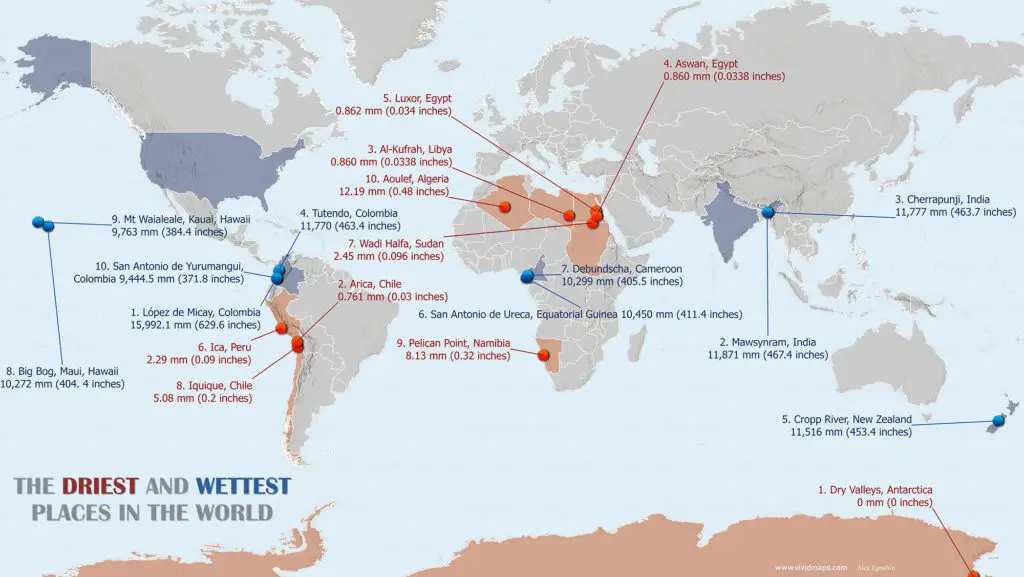
The Driest Places on Earth
Deserts dominate this list, but the absolute driest spot isn’t in a desert at all – it’s in Antarctica’s McMurdo Dry Valleys. There, fierce katabatic winds can reach 200 mph (322 km/h), heating as they descend and evaporating every trace of moisture. These valleys are considered Earth’s environments closest to the Red Planet.
Top 10 Driest Places in the World
| Rank | Place | Average Precipitation, mm |
|---|---|---|
| 1 | Dry Valleys, Antarctica | 0 |
| 2 | Arica, Chile | 0.761 |
| 3 | Al-Kufrah, Libya | 0.860 |
| 4 | Aswan, Egypt | 0.861 |
| 5 | Luxor, Egypt | 0.862 |
| 6 | Ica, Peru | 2.29 |
| 7 | Wadi Halfa, Sudan | 2.45 |
| 8 | Iquique, Chile | 5.08 |
| 9 | Pelican Point, Namibia | 8.13 |
| 10 | Aoulef, Algeria | 12.19 |
Countries Experiencing the Highest and Lowest Precipitation
Using 2020 World Bank data, I created the world map that shows the distribution of global precipitation by country. Colombia tops the list of rainiest nations—its equatorial location, coastal exposure, and mountain ranges create ideal conditions for high rainfall.
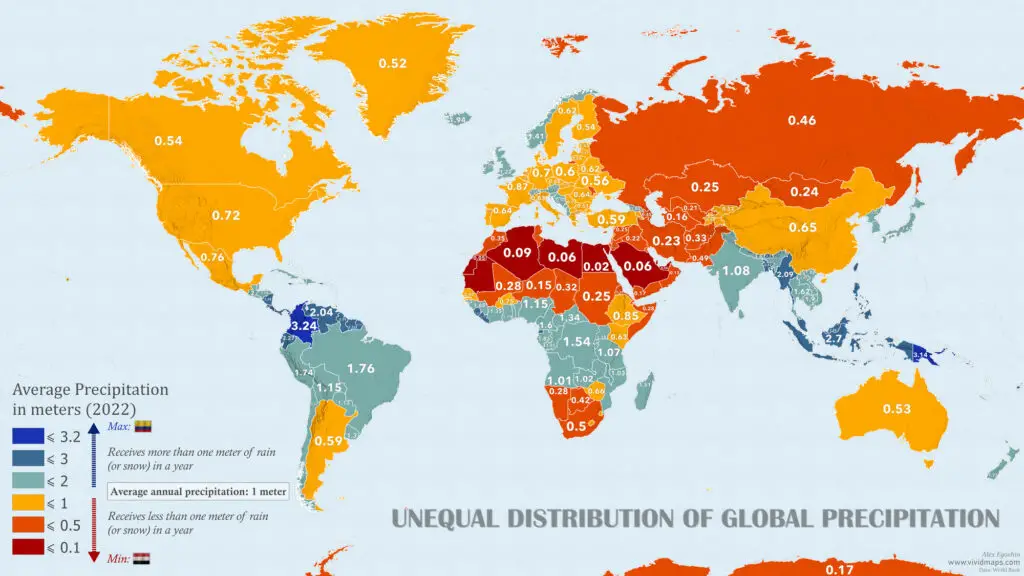
Top 10 Wettest Countries (mm/year)
| Rank | Country | Average Precipitation, mm |
|---|---|---|
| 1 | Colombia | 3,240 |
| 2 | Sao Tome & Principe | 3,200 |
| 3 | Papua New Guinea | 3,142 |
| 4 | Solomon Islands | 3,028 |
| 5 | Panama | 2,928 |
| 6 | Costa Rica | 2,926 |
| 7 | Samoa | 2,880 |
| 8 | Malaysia | 2,875 |
| 9 | Brunei Darussalam | 2,722 |
| 10 | Indonesia | 2,702 |
The driest nations are mostly in North Africa and the Arabian Peninsula, where persistent high-pressure systems, coastal cold currents, and rain shadow effects keep rainfall extremely scarce.
Top 10 Driest Countries (mm/year)
| Rank | Country | Average Precipitation, mm |
|---|---|---|
| 1 | Egypt | 18 |
| 2 | Libya | 56 |
| 3 | Saudi Arabia | 59 |
| 4 | Qatar | 74 |
| 5 | UAE | 78 |
| 6 | Bahrain | 83 |
| 7 | Algeria | 89 |
| 8 | Mauritania | 92 |
| 9 | Jordan | 111 |
| 10 | Kuwait | 121 |
You can learn more about the climate from the following map posters available on Amazon:




